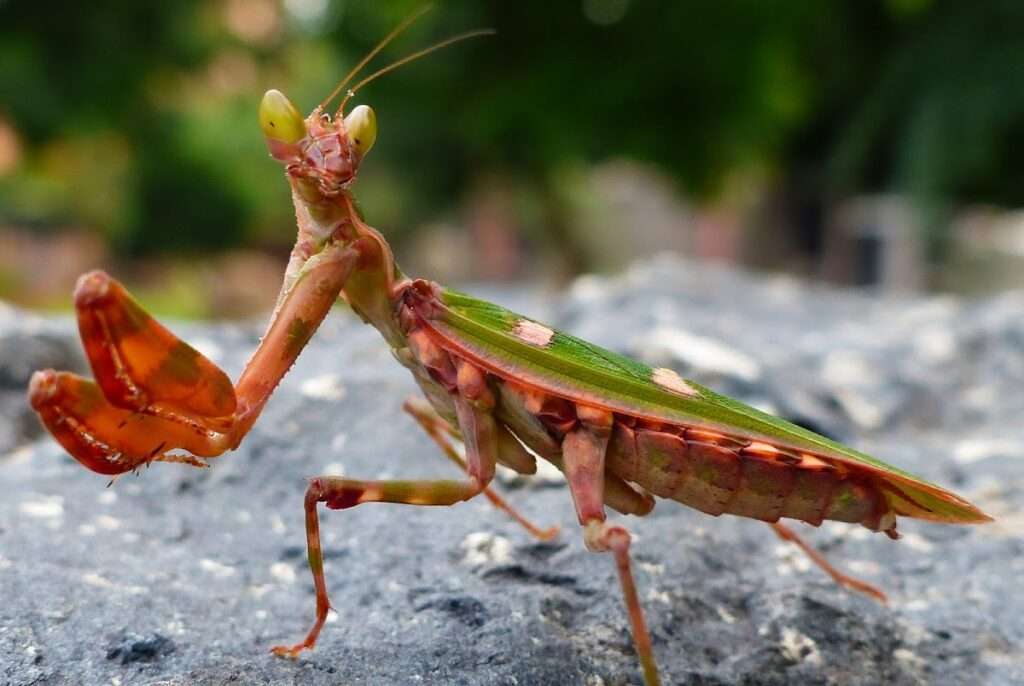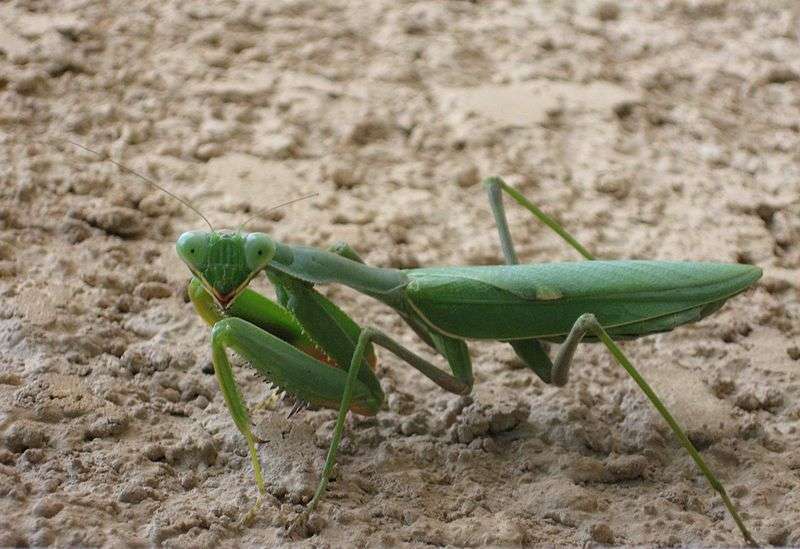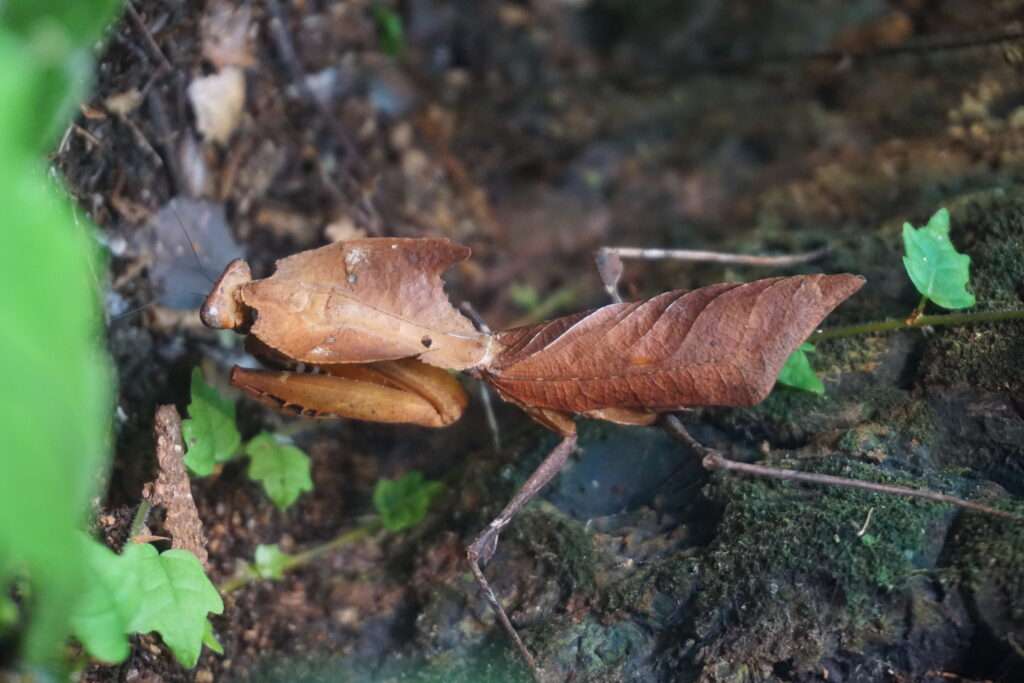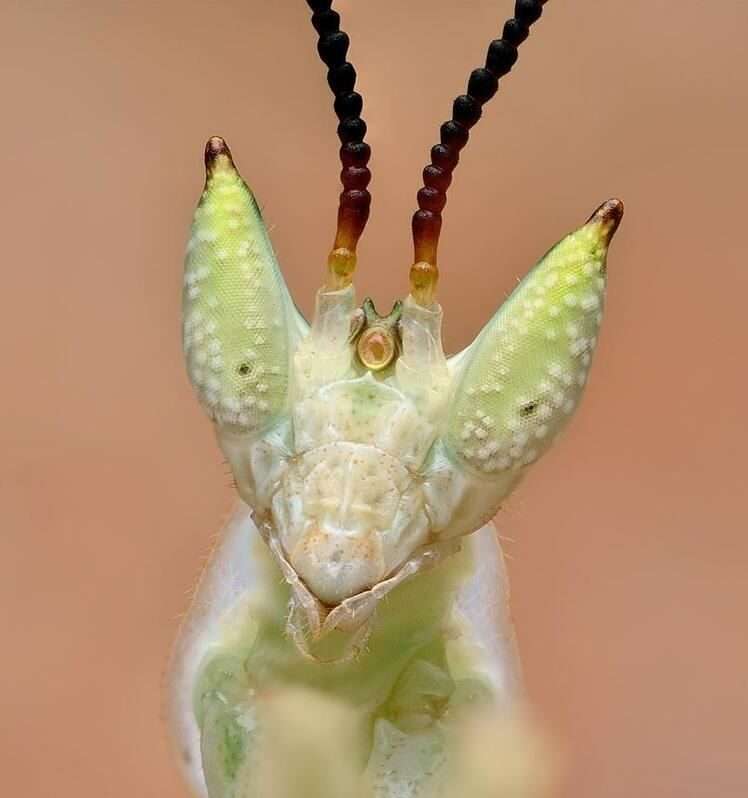
Scientific Name: Creobroter pictipennis
Lifespan: 9 months
Asian or Indian flower mantis are common names for the Creobroter pictipennis. The Indian Flower Mantis is a little bug with lovely, long, and distinctive wings that is cream-white in colour. On top of its light colouring, it has blotches on its upper belly and brown and yellow stripes on its legs.
The Creobroter genus is distinguished by an eye-catching yellow circle on the wings. You can identify one of these incredible mantis by the yellow “eyes” that lie over its wings if you’ve ever seen one of these magnificent insects in a threat posture.
Habitat
Asia is where you can find it, especially in countries with tropical temperatures like India. The flower mantis species lurks between flowers and shrubs and forages on insects looking for nectar.
Behavior
The Indian Flower Mantis is a predator that hunts its prey actively rather than passively waiting for it to approach. Because mantis are prone to cannibalism, you shouldn’t keep more than one adult specimen in the same enclosure.
The intriguing behavior of the Indian Flower Mantis against potential threats complements its aggressive hunting habits. Of course, they won’t encounter any predators in captivity, but mantis may find people to be threatening. They’ll first try to run away if they’re terrified. They have swift flight, and if given the chance, they will try to fly away from predators.
However, if confronted, they’ll try to frighten the predator away by adopting a threat stance and flashing their vibrant colors; this fascinating behavior makes the Indian Flower Mantis a fascinating companion.
Keeping as a Pet/ In Captivity

Tank
The enclosure for the Indian Flower Mantis must be at least three times as long, twice as wide, and twice as tall as the mantis. Finding a tank that is at least that size, or even going overhead for the mantis’ comfort, is a realistic aim because it is a little mantis. Make sure the tank has adequate ventilation holes to keep the species healthy. This species’ enclosure needs good ventilation to prevent mould and bacterial growth.
Fake plants and other such ornaments are nice, but they are not necessary unless you want to create a living vivarium. As the mantis flourishes around living plants and microfauna like isopods, which serve as cleaning crews, keeping it in a living environment is advantageous.
Temperature and Humidity
The Indian Flower Mantis inhabits hot, humid areas. It can thrive between 70°F to 85°F, although it feels most comfortable around 75°F.
You should maintain the humidity level of your Indian Flower Mantis between 60% and 80%, which can only be done by regularly spraying the cage.
Diet & feeding
The Indian Flower Mantis will gladly consume any small enough insects to fit on its plate, although it loves flying insects like flies.
You can feed L1 and L2 nymphs with D. melanogasters or other little fruit flies.
Every two or three days, L3 and L4 nymphs can feed larger fruit flies like D. hydei.
Larger flies like house flies and blue bottle flies can be consumed by L5 to adults.
Any remnants the mantis leaves behind will be cleaned up if you keep it in a bioactive enclosure with cleaning microfauna. If not, be sure to wipe up any debris your mantis left behind to prevent the growth of bacteria and fungi. Feed your mantis until it is full, but pay attention to the size of its belly; if it becomes thicker, you are overfeeding it, therefore you should change its diet.
Table





